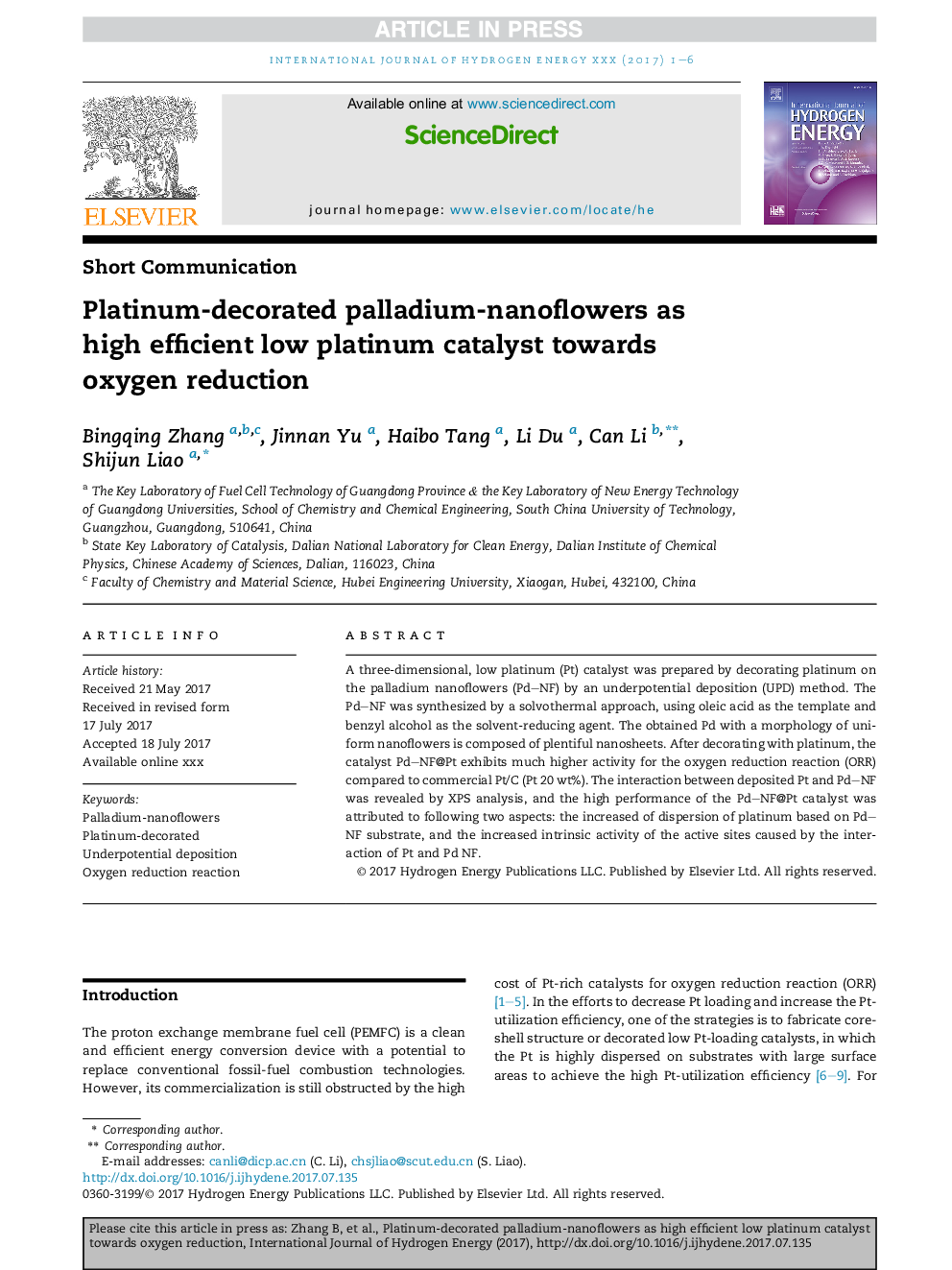| Article ID | Journal | Published Year | Pages | File Type |
|---|---|---|---|---|
| 5145279 | International Journal of Hydrogen Energy | 2017 | 6 Pages |
Abstract
A three-dimensional, low platinum (Pt) catalyst was prepared by decorating platinum on the palladium nanoflowers (PdNF) by an underpotential deposition (UPD) method. The PdNF was synthesized by a solvothermal approach, using oleic acid as the template and benzyl alcohol as the solvent-reducing agent. The obtained Pd with a morphology of uniform nanoflowers is composed of plentiful nanosheets. After decorating with platinum, the catalyst PdNF@Pt exhibits much higher activity for the oxygen reduction reaction (ORR) compared to commercial Pt/C (Pt 20Â wt%). The interaction between deposited Pt and PdNF was revealed by XPS analysis, and the high performance of the PdNF@Pt catalyst was attributed to following two aspects: the increased of dispersion of platinum based on PdNF substrate, and the increased intrinsic activity of the active sites caused by the interaction of Pt and Pd NF.
Related Topics
Physical Sciences and Engineering
Chemistry
Electrochemistry
Authors
Bingqing Zhang, Jinnan Yu, Haibo Tang, Li Du, Can Li, Shijun Liao,
